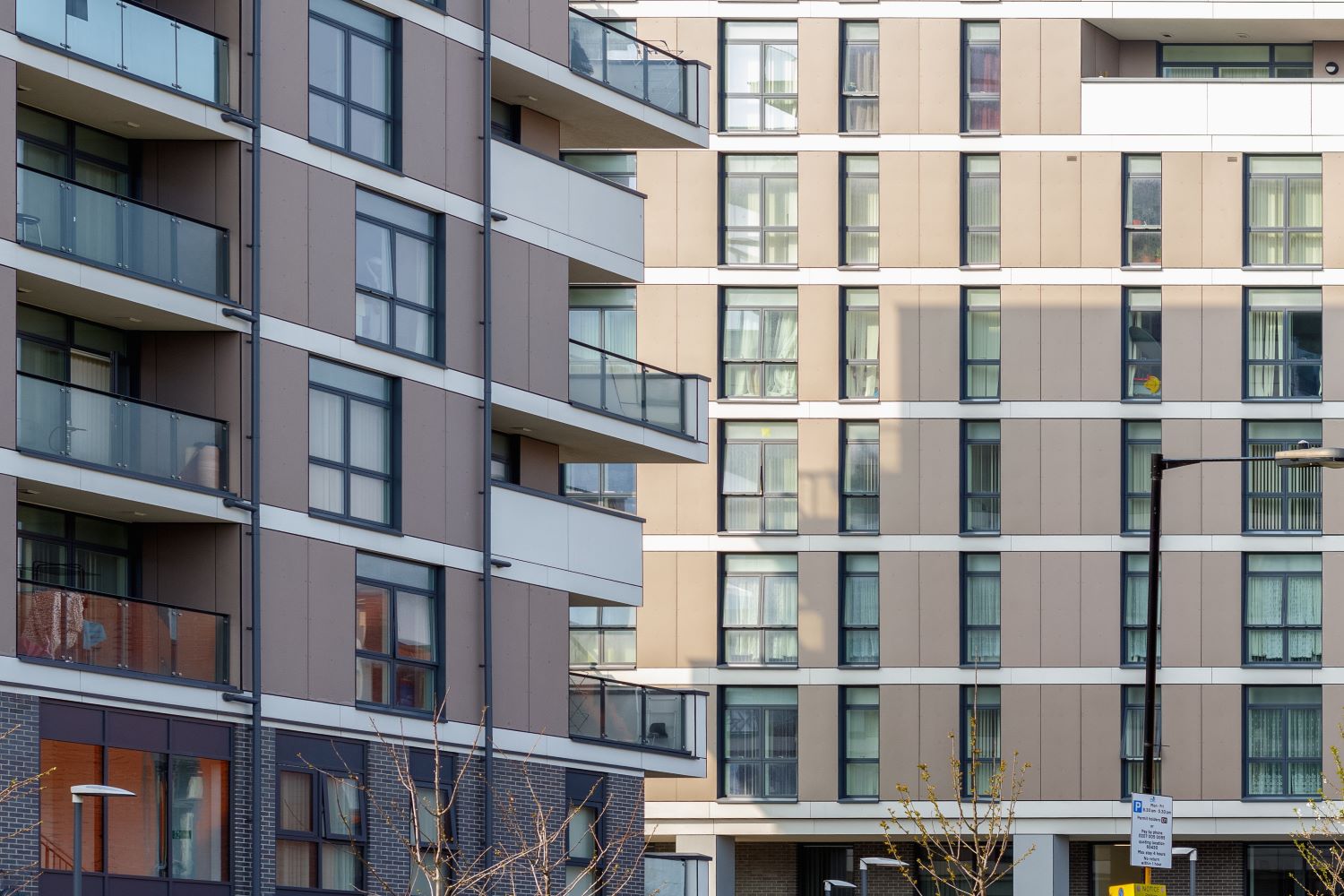Flat front doors have been a source of contention for many years but since 23 January 2023, after the Building Safety Act 2022 came into force further provisions were inserted into the Fire Safety (England) Regulations 2002 in respect of checks to be carried out to fire doors.
Now the responsible person for any multi-occupied residential building, over 11 meters high has a legal duty to carry out quarterly checks on all fire doors in the common parts of such buildings and to use ‘best endeavors’ to carry out annual checks on all flat front doors.
Having had numerous clients asking us about the ownership of apartment front doors in relation to responsibilities under the Fire Safety (England) Regulations, we’ve sought to provide some clarity on this, as well as how relevant parties can go about assessing and if necessary, altering front doors to ensure they’re compliant.
Who owns the front door?
Before we go any further, we’ll start with the most common question we receive regarding ownership of the front door. As you may have guessed, this leads to one of our most frequent answers, which is to refer to the lease in question. The ownership of the front door and details on maintenance responsibilities is likely to be included within the lease.
Within modern leases the details in relation to the front door are likely to be much more specific and set out at the very beginning of the lease document. However, older leases aren’t so straightforward, with some identifying the area and elements owned by leaseholders with a red line (sometimes hand drawn) marking the border of the property, with no further reference to ownership of things like windows and front doors. That being said, in most cases the responsibility for maintenance will be directly linked to ownership, however this cannot be assumed.
Responsibilities for freeholders and what costs can be recovered?
If we assume that the front door falls within the freeholders’ or property managements’ (Management Company, RTM Company, Managing Agent) responsibility, the next question is usually can the cost of replacing any doors that aren’t compliant, be recovered via the service charge. When the door is in poor condition and requires maintenance work or to be replaced, separate to the fact it isn’t compliant, you will normally be safe to recover the costs of a replacement via the service charge, as the repairing covenant will likely be triggered, but we’d suggest reviewing this before proceeding.
When the door is in good condition, but not compliant, you need to be especially careful that your actions to recover the costs are compliant with the lease. It is common to find within a lease that costs incurred to comply with ‘statutory requirements’ such as the fire and building safety acts, are recoverable via the service charge, but it is worthwhile checking. Additionally, most modern leases include a ‘sweeper clause’, which enables the recovery of any other (unspecified) items of expenditure incurred by the party responsible for managing the building, which whilst it can’t be used to recover whatever expenditure management want to recover, costs incurred in relation to fire and building safety are likely to be able to be recovered utilising this provision. Finally, a lease may include an obligation for the property management to comply with any requirements of the insurer. If this is the case and your insurer refuses to insure or increases the premium as a result of noncompliant fire doors, this obligation may be considered were you to recover the costs via the service charge.
Leaseholders’ responsibilities
When the front door is deemed to be the responsibility of the leaseholder and is not compliant, how can property management ensure the leaseholder takes the necessary steps to correct this, especially when the door is not in disrepair?
Again, we advise you to refer to the lease, as there may be numerous elements within it that enable you to inform that the leaseholder that they will be in breach of their lease if they don’t replace the front door to ensure it’s compliant. The wording to look out for is detailed below, along with some other potential options.
Obligation to keep in good condition: If the lease includes a requirement for the leaseholder to keep the demise in good repair and ‘condition’, you could suggest that by not having a compliant front door, the demise is not being kept in good condition.
Insurance covenant: Usually the lease includes a covenant that stops the leaseholder from doing anything that will void the building’s insurance or cause an increase in premium. Additionally, in many cases the offending leaseholder will then be required to pay any additional premium incurred as a result of their breach, to provide additional motivation to replace the door should this scenario occur.
Statutory compliance covenant: Within the lease there can sometimes be a covenant that requires leaseholders to comply with applicable statutes, laws or regulations. Therefore if they fail to comply with the responsible person in terms of replacing a door that is not fire compliant, they may be in breach of lease.
Introduce Regulations: The majority of leases enable the freeholder, management company or RTM company to introduce regulations to supplement those already present, as long as they’re reasonable and are for the proper management of the building. Given the importance of the legislation in relation to building safety, it may be possible to introduce regulation that requires leaseholders to comply with recommendations within a fire risk assessment. That being said, it’s worth noting that introducing regulations that mean leaseholders incur a cost are often not enforceable, but when they relate to building safety and the best interests of all leaseholders within the block they may well be introduced.
All in it together: When are numerous doors that aren’t compliant and need replacing within a block, it has been known for the property management to facilitate a bulk purchase of doors and their installation. This not only provides a discount on the cost to each leaseholder, but also a community feel and approach to the works, which encourages more leaseholders to take action.
What if details within the lease are unclear?
If having read the information above, you find that the lease you’re referring to lacks the details included within the majority of leases, we’d suggest you seek legal advice. In doing so your solicitor will be able to review the lease to ascertain whether there are any relevant details included that have perhaps been missed. Having conducted the review, if they find there are is not sufficient information included, they can advise you and potentially assist you with you next options, which may include applying to the First-Tier Tribunal (FTT) for a lease variation. However, it is worth being aware that this would require approval from all relevant parties.
Conclusion
Whilst there are a number of different considerations to make, dependent upon the scenario within which you’re working with, the short answer is refer to the relevant lease. Whether it is an old or modern lease, there is likely to wording included within it that assist you in determining who is responsible for the front doors and what means are available for recovering costs, should you need to do so.




